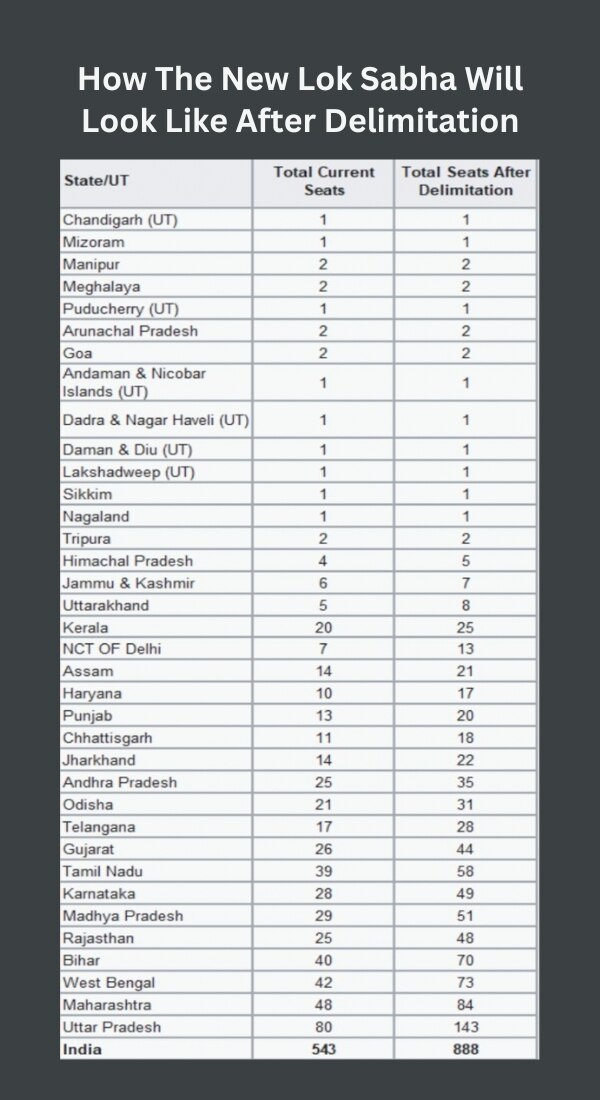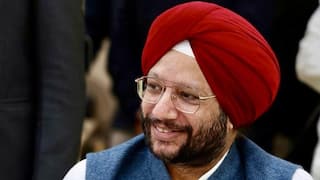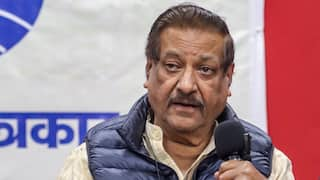Women Reservation Bill Brings Back Spotlight On Delimitation. How The New Lok Sabha Will Look

The Women’s Reservation Bill was passed in both Houses of Parliament this week with an overwhelming majority with Lok Sabha and Rajya Sabha MPs cutting across party lines extending support to the legislation pending for more than two decades. It is, however, likely to be implemented only after the completion of the delimitation exercise based on the first census after the bill becomes an Act. And this condition has led to a vociferous debate on why the implementation is linked to a delimitation exercise. It has also brought to the fore the apprehension of the southern states who feel they could end up on the losing side, threatening to open a pandora's box leading to confrontation between the north and the south.
What Is Delimitation And Why It Is Done
Delimitation is the act of redrawing boundaries of the Lok Sabha and assembly segments to represent changes in population. As per Article 81 of the Constitution, the composition of the Lok Sabha should represent changes in the population.
The number of seats has remained more or less the same since the delimitation exercise carried out in 1976 on the basis of the 1971 Census. In 1971, India's population was 54 crore, and the total seats were 543. Today, the population is estimated to be 140 crore, while the total number of seats has remained the same.
The ratio between the number of seats in a state and the population has been kept nearly the same for all the states to ensure every state is equally represented.
Smaller states, which have a population of less than 60 lakh, are exempted from this rule. At least one seat is allocated to every state/union territory, irrespective of the population.
To ensure that the southern states — which promoted family planning — do not end up with a reduction in seats, no delimitation exercise was carried out until 2001, and then it got extended till 2026 on grounds that a uniform population growth rate would be achieved throughout the country by then.
New Parliament Ready for Increased Capacity
In anticipation of the increase in the number of Lok Sabha seats after delimitation, the BJP government has ensured the new Parliament building constructed by it has an increased seating capacity. As per reports, the new Parliament can house up to 888 MPs, an increase of 345 from the current strength.
As a thumb rule, there should be one MP for every 10 lakh voters. In the 2019 general elections, there were approximately 88 crore voters, implying there should be 888 MPs to represent them.
New Parliament Look
On the basis of the approximate population figures of 2021, as per my research, the seats of Uttar Pradesh could increase from 80 to 143, Maharashtra from 48 to 84, West Bengal from 42 to 73, Bihar from 40 to 70, Rajasthan from 25 to 48, Madhya Pradesh from 29 to 51, Karnataka from 28 to 49, Tamil Nadu from 39 to 58, Gujarat from 26 to 44 and Telangana from 17 to 28.
These 10 states alone account for an increase of 274 seats out of the total increase of 345 anticipated (around 80%).

The states in the Northeast, and the UTs are not likely to witness any increase. None of the states are going to witness a decline in the number of seats as propagated by some analysts. All of them, including the southern states, should see an increase in the number of seats — the proportion may not be acceptable to all, though.

Regional Representation
A region-wise analysis of the new Lok Sabha after delimitation shows that the South (-1.9 per cent) and Northeast (-1.1 per cent) could witness a decline in representation from their regions.
North India, which accounts for 27.8 per cent of the current Lok Sabha strength, would see a rise of 1.6 per cent and account for 29.4 per cent of seats in the new Lok Sabha after delimitation.
Similarly, Eastern India (+0.5 per cent), Western India (+0.5 per cent) and Central India (+0.4 per cent) would also see higher representation in line with an increase in population.
The delimitation would also ring in good news for the women folk, as the 1/3rd representation would result in 300-odd female MPs in the Lok Sabha, almost quadrupling from their current strength of 78.
To sum up, the new Lok Sabha would lead to a redrawing of boundaries on the basis of the latest population numbers representing current aspirations.
The author is a political commentator and SEBI-registered investment advisor.
[Disclaimer: The opinions, beliefs, and views expressed by the various authors and forum participants on this website are personal and do not reflect the opinions, beliefs, and views of ABP Network Pvt. Ltd.]


























